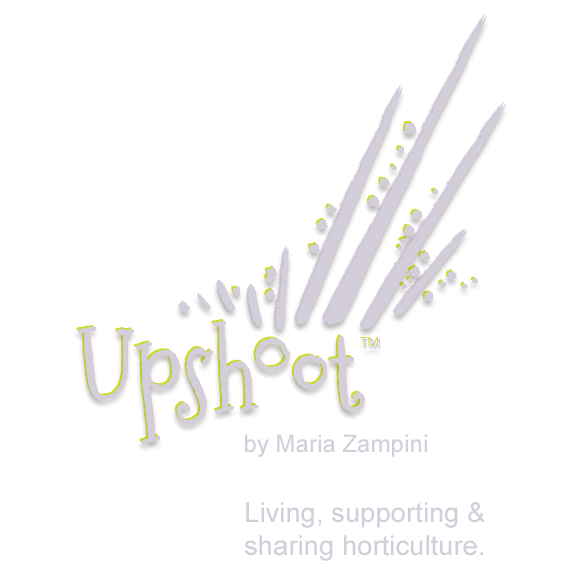<
There is an undeniable amount of pressure on growers to put out that perfect plant.
By Maria Zampini | American Nurseryman Magazine
A colleague in the Nursery and Greenhouse Production Facebook group asked if I had any thoughts on biological pest control. He wanted to know, “Is integrating biological IPM agents truly feasible? What is the industry interest level? It seems more prevalent at trade shows. Will buyers, both wholesale and retail, accept plants less than perfect?”
The fact is, there is an undeniable amount of pressure on growers to put out that perfect plant, whether we choose to treat for pests and diseases with chemical methods or biological controls. It used to be that rows of plants lined up looking like little tin soldiers was the exception, but now it is the rule. In general, putting out high-quality, consistently sized and shaped plants is no longer a true differentiation strategy: It is simply expected.
 Having said that, I think the success of using bio-controls in a closed greenhouse environment is a more easily achievable goal compared to outside nursery stock production. Lloyd Traven of Peace Tree Farm in Bucks County, Penn., is a good example of a greenhouse grower dedicated to and experienced in using sustainable control methods, so no doubt it can be done. Where there is a will, there is a way.
Having said that, I think the success of using bio-controls in a closed greenhouse environment is a more easily achievable goal compared to outside nursery stock production. Lloyd Traven of Peace Tree Farm in Bucks County, Penn., is a good example of a greenhouse grower dedicated to and experienced in using sustainable control methods, so no doubt it can be done. Where there is a will, there is a way.
I spoke with a few ornamental crop growers and their consensus was that utilizing biocontrols of ornamental crops in the outdoor arena is a whole different ball game. I’m quite sure there likely are success stories that I am just not aware of. However, my guess is, the feasibility of control might depend on geographic location, size of production area and crop type. I’m not a pest and disease expert, and I don’t profess to be. I can only provide a one-woman opinion looking from the outside in.
Growers discussed with me a few examples of the challenges they face:
- Flea Beetles
You can’t have any chew holes on leaves, and ladybugs won’t work fast enough to prevent leaf damage. - Oyster Shell Scale
Sure, the ladybugs will eat the scale crawlers. But if you miss the crawlers, they will settle and you’re done until next year.
Can you really take the chance that you don’t catch them all? - Black Cherry Aphids
If every single one of them is not killed, plants will have curled leaves, and no one will accept plants with curled leaves.
No matter which way you cut it, wholesale customers expect impeccable plants on every load, picked up or delivered. In turn, retail customers also want unblemished product. When you stop to think about it, though, it’s ironic that these same consumers will be the first to shop clearance areas in garden centers and at mass merchants. Then again, I guess consumers are always looking for a bargain, be it plants or other products – myself included.
 In August, I attended the Garden Writers Association Annual Symposium in Quebec City, Canada. We had a dinner meeting of the GWA Association Outreach Task Force, which I chair, and the Sustainability Task Force. There was great dialogue regarding the GWA sustainability mission as it relates to the green industry.
In August, I attended the Garden Writers Association Annual Symposium in Quebec City, Canada. We had a dinner meeting of the GWA Association Outreach Task Force, which I chair, and the Sustainability Task Force. There was great dialogue regarding the GWA sustainability mission as it relates to the green industry.
I shared my view that, while there are many who know that our industry should theoretically be the leader in being “green” (and not just with plant material), unfortunately practicalities and cost effectiveness sometimes trump that goal. After all, as an industry, many are still struggling from the economic downturn, and it is all they can do just to make payroll and keep their heads above water.
I believe we realize that we need to protect our natural resources to continue to do what we do. Even if a company does choose to utilize chemical products, they can still be good stewards by using them properly and following label instructions. Being responsible for our environment isn’t limited to either our personal or professional lives; it should be a natural habit and way of life.
There are those in the industry leading the sustainability charge and those who will follow – some more slowly than others, and a few even kicking and screaming. I think regardless of what level of “green” your company practices, we need to realize that this is also a marketing angle. It’s a way to differentiate your company from your competitors and to appeal to new customers, whether professional or consumer.
Here are a few businesses doing so:
Peace Tree Farm
Llyod and Candy Traven have long been known for their commitment to advanced technology combined with sustainable and organic growing techniques.
Carlton Plants
Has included in its 2013-2014 catalog a two-page spread about its conservation efforts, highlighting the company’s use of cover crops.
Salsbury- Schweyer Inc.
Sabrena Schweyer her partner Samuel Salsbury have a joint creative approach in landscape design. They create sustainable landscapes that improve over time and do not require high levels of water, chemicals or pruning.
Garden Media Group
Suzi McCoy of debuted her annual Garden Trends Report at the GWA Symposium in Canada. She reported that the sustainability trend continues to deepen. I believe it is a trend that will only continue to strengthen.
Putting one’s head in the sand is not the answer; maybe a compost pile instead?
I know, it’s just one more thing to do, but perhaps this is something you assign to one of the millennials on your staff. After all, if it is a subject they are passionate about, then they will be more willing to take it on. Regardless, it will be like eating an elephant – one chunk at a time and as resources permit.
Maria Zampini is the president of UpShoot LLC. Her company’s focus is “living, sharing and supporting horticulture” through new plant introduction representation including LCN Selections. She can be reached at maria@upshoothort.com.
]]>

